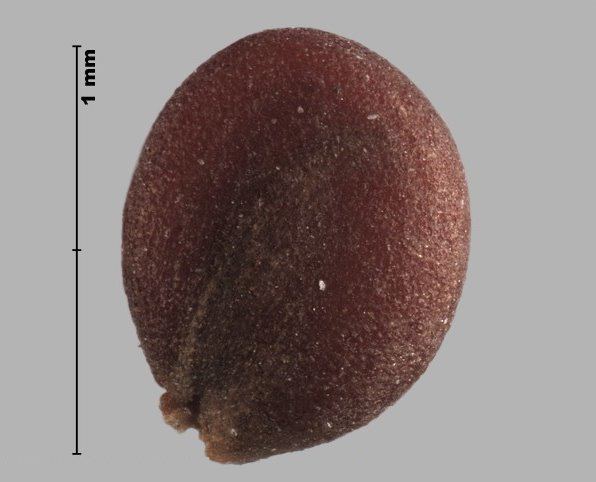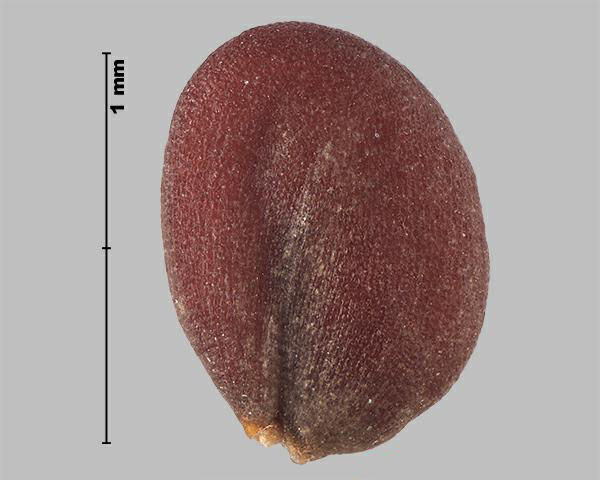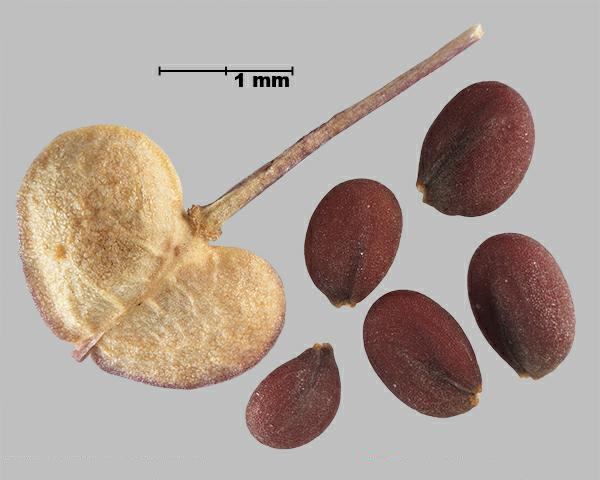Family
Brassicaceae
Synonyms
Cardaria pubescens
Common Name
Globe-pod hoary cress
Regulation
Primary Noxious, Class 2 in the Canadian Weed Seeds Order, 2016 under the Seeds Act.
Distribution
Canadian: Occurs in AB, BC, MB, SK (Brouillet et al. 2016Footnote 1).
Worldwide: Native to central Asia and introduced in North America (Canada and the United States) and South America (Argentina) (USDA-ARS 2016Footnote 2). In the United States, it is mostly found in the western and midwestern states (Francis and Warwick 2008Footnote 3).
Duration of life cycle
Perennial
Seed/Fruit type
Seed
Seed identification features
Size
- Seed length: 2.0 - 2.5 mm
- Seed width: 1.3 - 1.8 mm
- Seed thickness: 1.0 mm
Shape
- Seed oval, compressed, the hilum area is flattened
Surface Texture
- Seed granular
Colour
- Seed reddish-brown
Other Features
- Pods are globose to kidney-shaped, strongly inflated, 3.0 - 4.5 mm long and 2.5 - 4.5 mm wide, hairy
- Seed is oval in cross-section
Habitat and Crop Association
Cultivated fields, gardens, pastures, feedlots, grasslands, orchards, roadsides, railway lines and other disturbed areas (Darbyshire 2003Footnote 4, Zouhar 2004Footnote 5). A weed of pastures and alfalfa and clover fields in Canada (Francis and Warwick 2008Footnote 3).
General Information
Contaminated alfalfa seed or horse feed was the probable introduction route for globe-pod hoary cress into North America in the early 1900s (Francis and Warwick 2008Footnote 3).
Similar species
Lens-pod hoary cress (Lepidium chalepense)
- Lens-pod hoary cress seeds are a similar size, reddish-brown colour, rough surface and oval shape as globe-pod hoary cress.
- Lens-pod hoary cress seeds are ovate in cross-section due to a smaller radicle than globe-pod hoary cress.
Heart-pod hoary cress (Lepidium draba subsp. draba)
- Heart-pod hoary cress seeds are a similar size, roughened surface and oval shape as globe-pod hoary cress.
- Heart-pod hoary cress seeds are darker brown with a surface reticulation and ovate in cross-section often with constrictions between the cotyledons and the radicle.
Photos
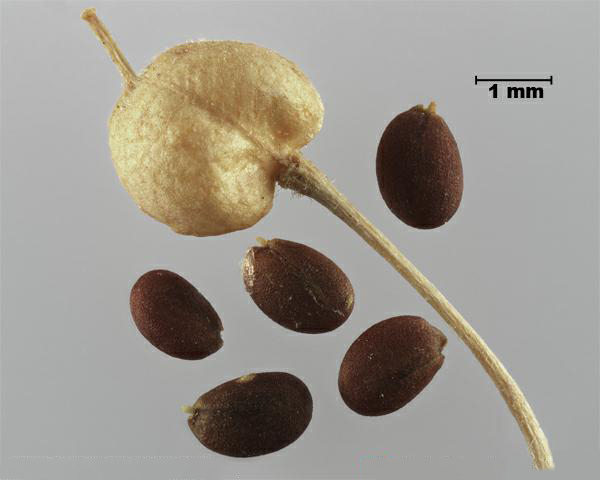
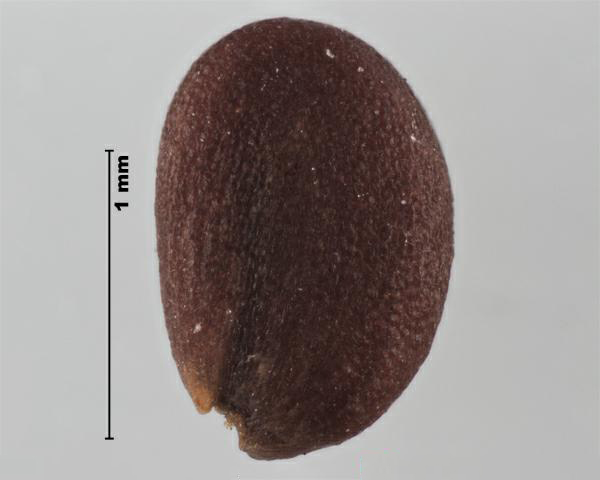

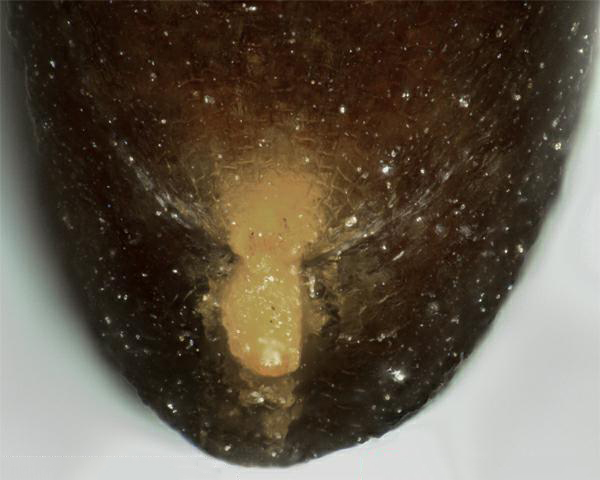
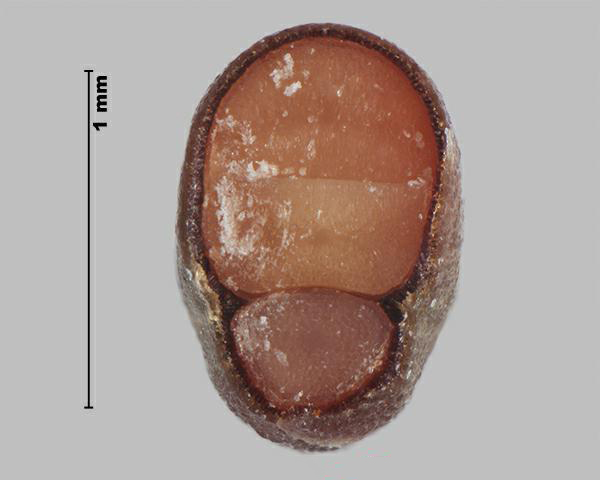
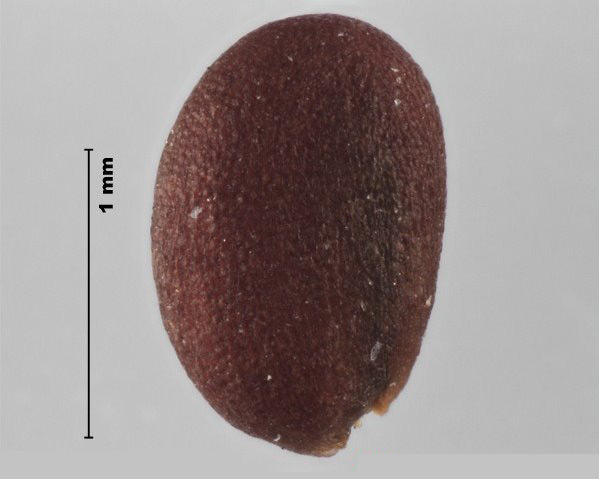
Similar species

